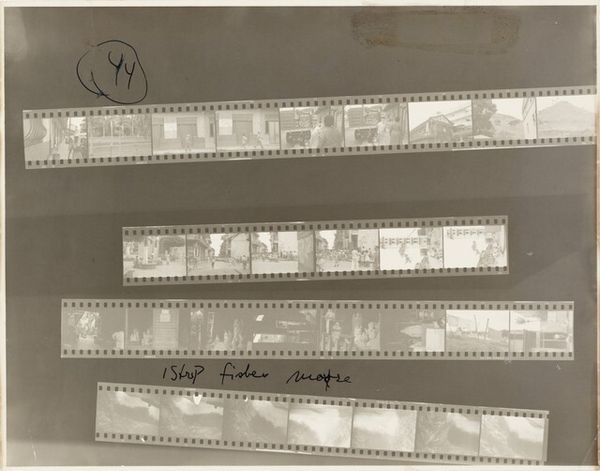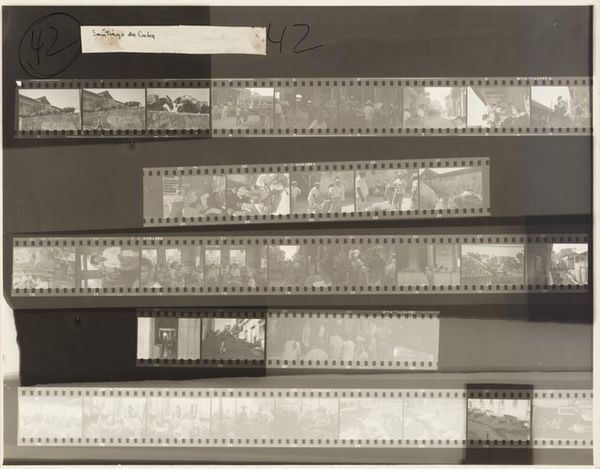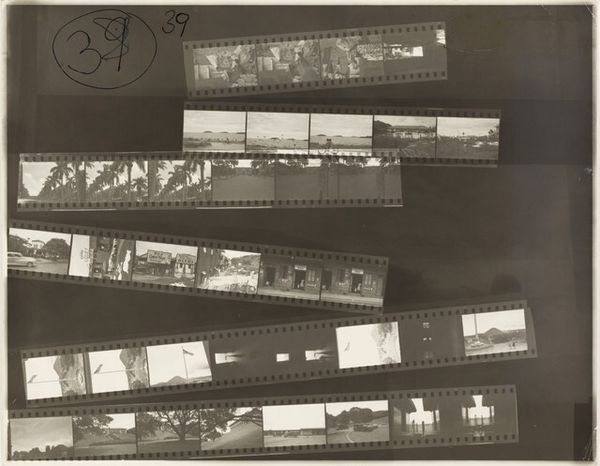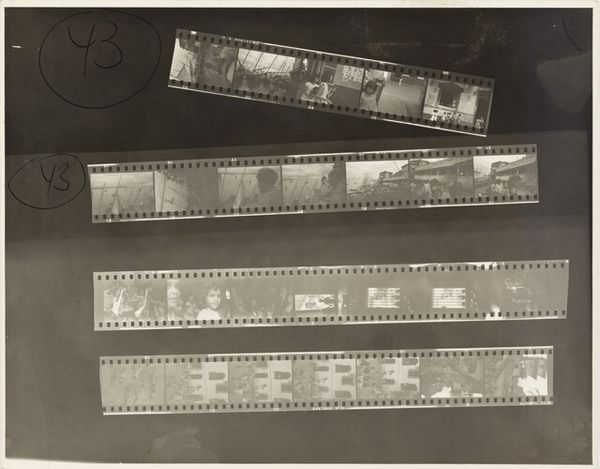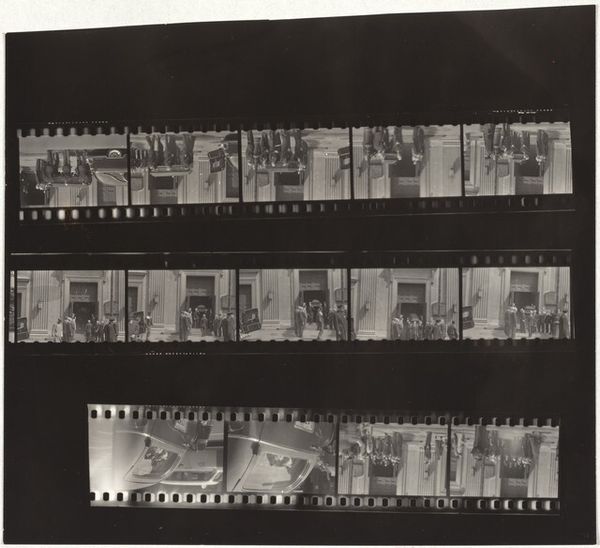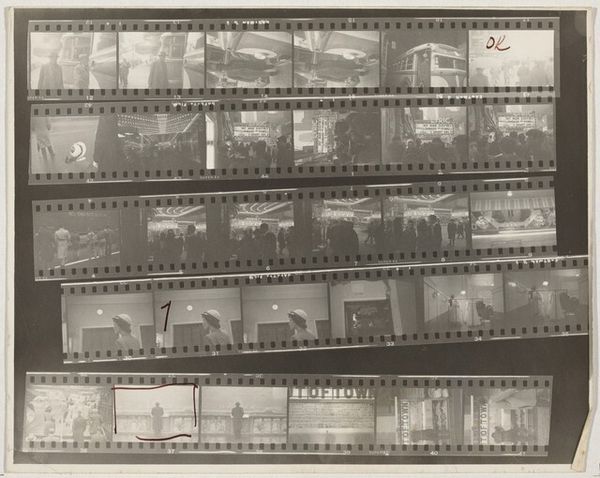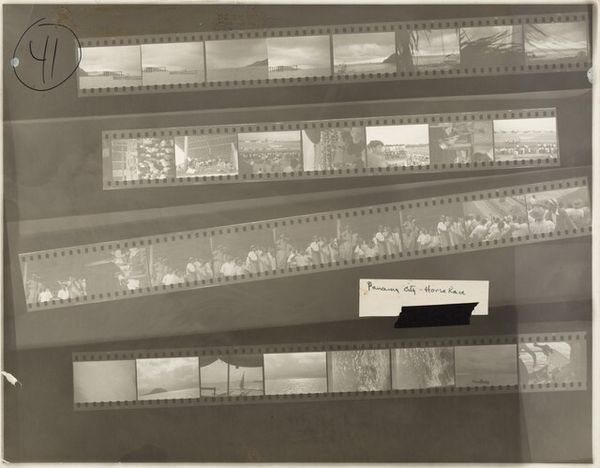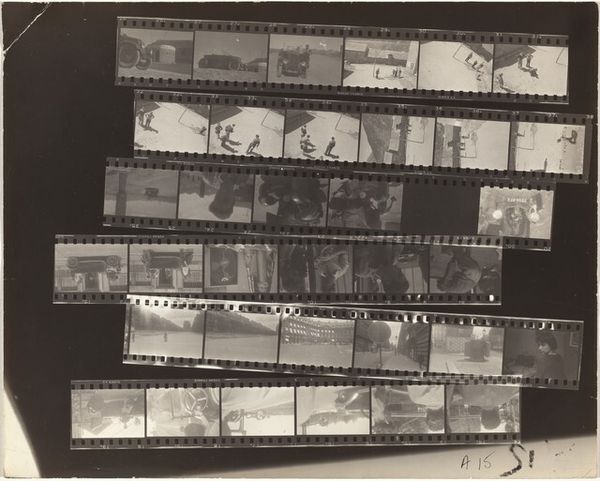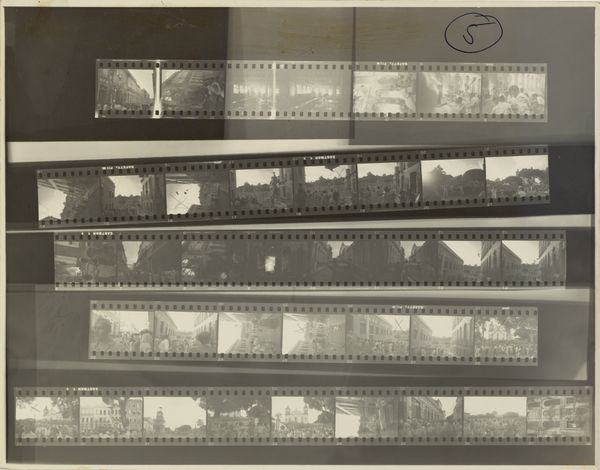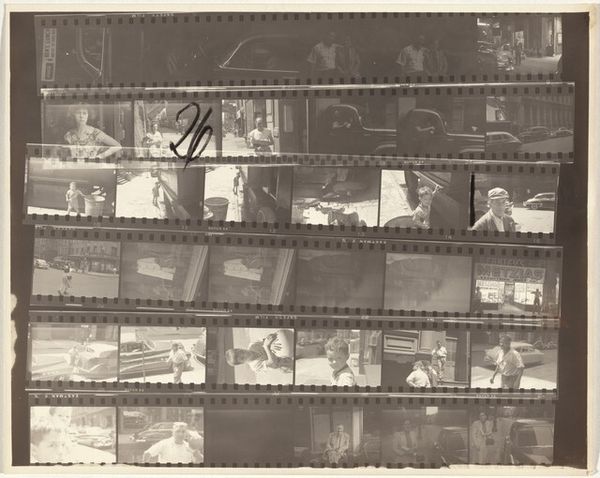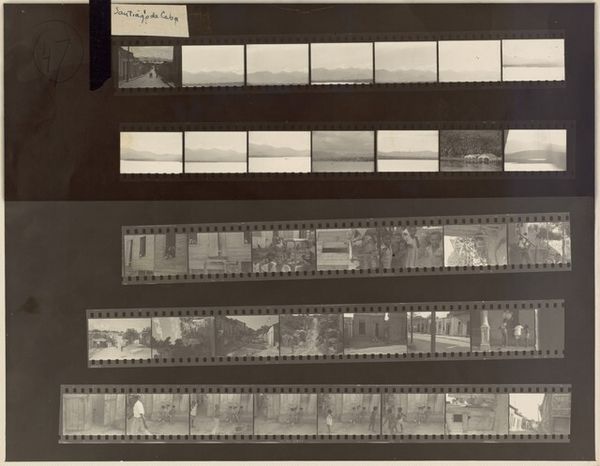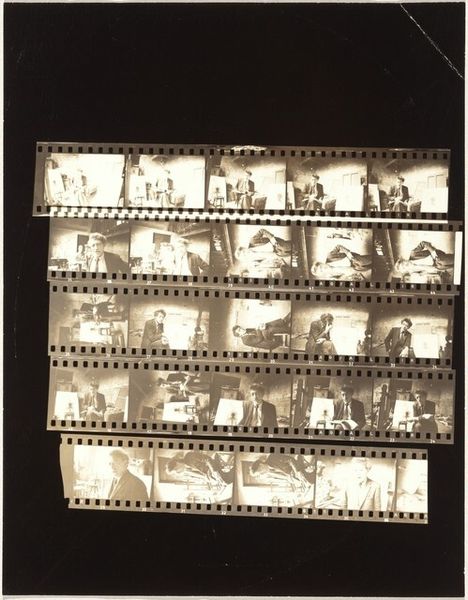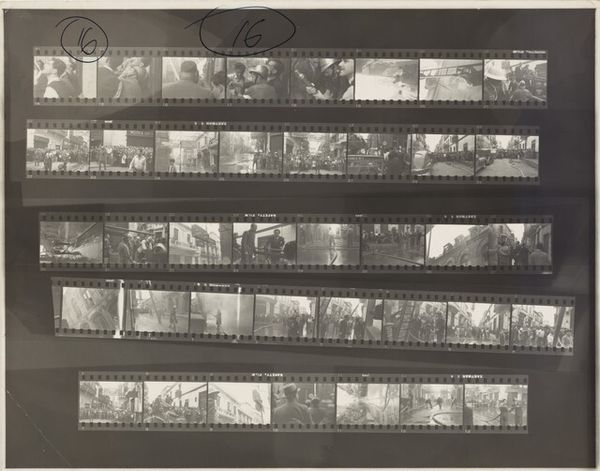
Dimensions: sheet: 27.8 x 35.4 cm (10 15/16 x 13 15/16 in.)
Copyright: National Gallery of Art: CC0 1.0
Editor: Here we have Robert Frank's "Peru 45," a contact print from 1948. What strikes me most is the layering of the film strips themselves – it gives the image a real sense of depth and almost a fragmented narrative. What stands out to you? Curator: The work presents a compelling study in photographic structure. The sequential nature of the film strips is visually intriguing. Consider how Frank composes the frame not just with the images contained, but with the physical object of the film itself. Note the visual texture created by the sprocket holes, and how that contrasts with the smooth gray background. Editor: So, the medium becomes the message in a way? Is the physical presentation crucial to interpreting his vision? Curator: Precisely. The artist compels the viewer to consider the photograph as an object, an arrangement of shapes and tones, and its significance to its raw structure. The contact print foregrounds the raw data of the photographic process: the unspoiled film roll strips reveal photography’s basic formula. What we get, instead of individual pictures is a composite whole, with dark frames in contrast with populated urban landscapes. Editor: That’s a helpful way to view it; thank you. Initially, I was looking for a literal narrative in the individual images, but I realize Frank is playing with our perception itself. Curator: Yes, it transcends beyond a collection of photographs. Frank experiments with how viewers decode art. Now, how might an individual apply such structural observation to any photograph, and what might be unlocked? Editor: Now I see a more layered appreciation by thinking about art materials first before moving onto narratives and themes. Curator: Indeed. Hopefully our listeners can develop this perspective in the following artworks.
Comments
No comments
Be the first to comment and join the conversation on the ultimate creative platform.
